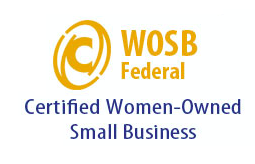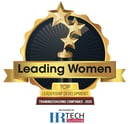-1.jpg?width=1800&name=portability-makes-all-the-difference-in-improving-productivity-picture-id629364264%20(1)-1.jpg)
A Catalyst for an Inclusive Culture
We all know that mentorship can help pave the way for career success on the road to leadership. We also know that leaders drive culture. But for a culture to truly be inclusive, leaders must model inclusivity in all that they do. For organizations and leaders who recognize the value of creating an inclusive culture, but struggle to fundamentally shift their culture to one of inclusion for all, one proven and profound method is a formalized Reverse Mentoring program. Reverse Mentoring enables people in more senior positions to gain insight from having regular, semi-structured conversations with team members who are likely to see the world from a different perspective. The process aids in better decision-making, higher retention rates for diverse talent through greater job satisfaction, and giving invaluable exposure to under-represented talent, nurturing allies and advocates within senior ranks.
Simply put, Reverse Mentoring is really about inclusion. In addition to having a positive impact on your company’s culture, Reverse Mentoring will liberate the power of all humans to generate the desired business outcomes needed to compete in today’s business environment.
What is Reverse Mentoring?
Like traditional mentoring programs, Reverse Mentoring pairs junior leaders with more senior leaders––but as the name suggests, the junior leader assumes the role of mentor, and the senior leader assumes the role of mentee.
Fundamental to the thinking behind Reverse Mentoring is that we sometimes need to challenge ourselves with a different view of reality, in order to prevent ourselves from becoming rigid and complacent. Psychologists refer to the notion of ‘dissonance’ ––that moment when you come up against a discrepancy between what you already know, and the existence of new information or a different interpretation of reality (i.e., you know that you are a reasonable weight for your build, but the bathroom scales seem to be suggesting something different). Reverse Mentoring contains within it the potential for challenging those of us in senior positions with information, perspectives and interpretations of reality that might cause us to rethink what we know, while at the same time, demonstrating our belief in the importance of respecting difference.
The concept of Reverse Mentoring is not new, with Jack Welch, the former CEO of General Electric among the first to implement a Reverse Mentoring program in the late ‘90s to help teach senior executives about the internet. Many organizations followed suit, using Reverse Mentoring programs to bridge the age gap, with millennials helping older colleagues understand generational perspectives and learn new technology. The unintended consequence of those pairings drew more valuable and powerful insights around cultural perspective, gender inequity, and fostered inclusivity by bridging the gap between populations diverse in age, ethnicity, gender, culture, working mindsets, and leadership approach.
How does Reverse Mentoring nurture a culture of inclusion?
Reverse Mentoring programs help mentors and mentees feel more connected to the organization’s culture by giving both participants new insight into other facets of the culture than they may have been exposed. By pairing individuals with different backgrounds and experiences, each gains a greater understanding and empathy for their unique challenges. It improves the diversity talent pipeline by giving diverse talent exposure to senior leadership members, who through guided exposure, mitigates unconscious bias and improves understanding. Those senior leaders then become greater allies and advocates for the diverse talent within the organization’s succession-planning process.
Tim Kemp, Co-Chair for Leading NOW’s Center for Diversity & Inclusion shares:
“Reverse Mentoring is the quickest way I know of bringing the benefits of different perspectives to the attention of those who can most effectively utilize them to the advantage of the business.”
Structure is the key
Our Reverse Mentoring programs utilize a semi-structured facilitation approach on a range of topics, based on relevant research and identified client culture challenges. Through a series of semi-structured discussions, pairs explore the barriers to diverse talent advancement and gain a shared understanding of these challenges. These guided discussions create a safe and structured way to navigate difficult topics, resulting in greater shared understanding, empathy, and perspective.
A number of companies we’ve worked with have experienced consistently positive results with Reverse Mentoring programs when applying these three basic principles:
- Engage managers in solving the problem
- Expose them to people from different groups
- Encourage social accountability for change
Leading NOW’s clients who have successfully implemented this form of facilitated Reverse Mentoring program, report 96% retention rate amongst the individuals who had participated in the program. They concluded that those who had rotated through the program felt better connected to the organization, which was likely to have influenced their decision to stay. It is one thing to have diverse representation dispersed throughout the organization, but it takes a foundational shift to create an inclusive culture for all to have them stay and feel engaged.
Other benefits of a Reverse Mentoring program
- Informative, engaging and non-confrontational
- Action-oriented and focused on business outcomes
- Ease of implementation
- Works with virtual or face to face pairs
Reverse Mentoring as Diverse Mentoring, can break down traditional barriers that impede the advancement of your diverse talent in the workplace. Shifting the power dynamic of the traditional mentoring model promotes a sense of belonging, and nurtures stronger connections between colleagues. It is this human connection that will lead to a more equitable future and build inclusive cultures for all.
If you’re interested in putting a Reverse Mentoring program in place, let’s have a conversation. It’s never too late to build a culture of inclusion and we can help. #FutureForward







